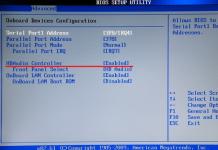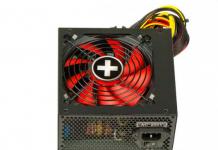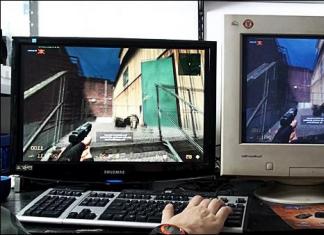The purchase of a computer for people far from technology is mainly limited to the concepts of "video card", "processor" and "RAM". However, for some reason, the power supply is remembered last. And when it comes down to it, in most cases would-be assemblers try to save as much as possible on it by investing in other PC components.
“It's just a box giving energy. Anything that works, the main thing is, let it be more powerful and cheaper! " - the approach is quite common and, frankly, a failure. Unfortunately, this becomes obvious only when you turn on the assembled computer. Lucky if it starts at all. It will be doubly lucky if this work is stable and without sudden interruptions. And it will be quite happy if the cheap power supply does not eventually fail in the next few months, without "dragging" the rest of the components with it, which it somehow provided with power.
But in reality this can only be guaranteed by high-quality power supplies for computers, the rating of manufacturers of which is confidently holding on to worthy positions. Therefore, the competent choice of a product, which in fact will work out every penny of its value, remains only with the buyer, who, of course, needs to remember about the main characteristics of the power supply and understand which of the manufacturers is really trustworthy.
Power for the entire system
This is the main parameter of the device, which is of interest to users in the first place. When choosing, many are often lost in watts, which provide the entire computer with power. Lack of power is fraught with unstable operation of equipment (up to the impossibility of starting it). On the other hand, the overkill of the power supply will cause a significant blow to the budget, which could have been avoided.
The power consumption of a computer in each case must be calculated individually, based on the final set of components. Do not forget that the power supply unit must have at least a small power reserve in the range of 20-25% of the theoretically possible energy consumption. There are dozens of special calculators for these calculations on the Web. The most accurate (and therefore popular among the people) option is the Cooler Master Power Supply Calculator. It provides users with two types of work at once:
- Basic is a mode that allows any beginner in the topic of computer hardware to calculate the required power of the PSU, indicating only the general characteristics of the PC.
- Expert is a mode for advanced users and avid computer enthusiasts. Allows you to calculate taking into account all the smallest details and subtleties of the system.
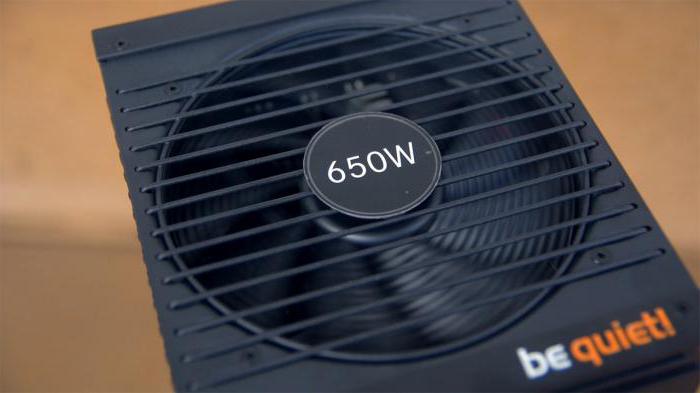
In addition to the total power, it is important to pay attention to the current that the 12V line is capable of transmitting. It is the main source of electricity consumption in the computer. For example, the AeroCool KCAS 600W power supply unit at 12V produces a little less than its total indicator - 540 watts. A better product from Be quiet! under the name Power Zone 650W is capable of 648 watts on the same line. This is a much better indicator and naturally more expensive.
It is on this parameter that you should rely on in your choice. After all, who will not be disappointed when a video card designed for one power indicator on the 12V line, when connected to a power supply unit, gets a completely different, lower one? Of course, the unstable operation of the video chip is even the best that one can hope for in such a situation.
Useful flow rate
Any resource can be used in different ways: somewhere it is done using more rational methods, and somewhere excessive squandering leads to additional costs. Roughly the same with power supplies - the same power rating can be consumed with varying degrees of efficiency. High efficiency affects the entire operation of the device as a whole:
- Rational The cheap rating of manufacturers, which in most cases drowns at the bottom of the market, constantly sin with low efficiency. Receiving electricity from the network, the power supply unit dissipates a certain part of it in the form of heat, giving out a smaller volume of what was originally received. Inexpensive devices in this way lose a prohibitively large portion of their electricity.
- Due to the reduced dissipation, the heating of the power supply itself is also reduced. This keeps its cooling system quiet.
- Lower temperatures significantly extend the power supply.
High efficiency is a sign of the rational use of electrical resources, for which each of us pays money. For the proper level of efficiency, a high-quality element base of the device is required.
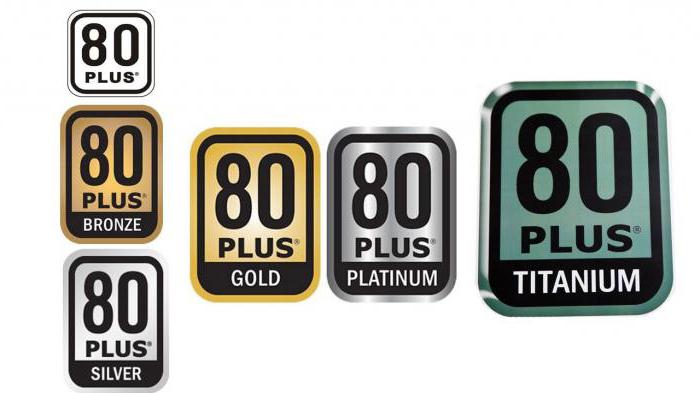
The energy efficiency rating for power supplies is determined by a single international standard 80 PLUS. It is divided into several classifications:
- Bronze - 81-85%
- Silver - 85-89%.
- Gold - 88-92.
- Platinum - 91-94%.
- Titanium - 94-96%.
In general, a block with official certification 80 PLUS Bronze will be enough for basic computer configurations with a level of hardware up to the mid-price segment. For more powerful and, accordingly, demanding components, Silver-Gold is the best option. Owners of top-end configurations are recommended to look towards Platinum or Titanium if there is an urgent need for maximum energy efficiency of the system.








